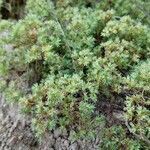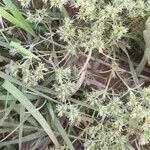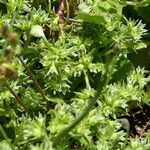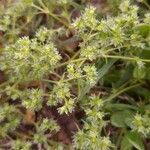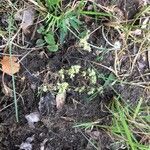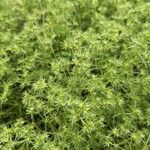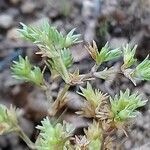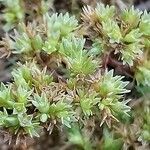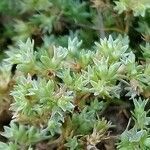Annual; stems erect or ascending, 10-25 cm tall, bearing downwardly curved hairs; internodes 2 cm or more long. Lvs paired and in short axillary fascicles, linear-subulate from broad connate scarious ciliate base, acute or minutely acicular, (5)-7-15 × 0.5-1 mm. Peduncles 0. Bracts leaflike, slightly > fls. Fls axillary, solitary or clustered, sessile or shortly pedicellate. Sepals 5, linear with very narrow scarious margins, at fruiting slightly spreading and 1-11/2× the 10-ridged perigynous zone; whole fr. 4-5 mm long. Stamens up to 10, included in calyx.
Low, diffuse, spreading, glabrous or puberulent annual or biennial to 15 cm; lvs linear, the larger ones 5–25 mm; fls sessile or subsessile; sep equaling or longer than the hypanthium, lanceolate, ± acute, with a very narrow scarious border (ca 0.1 mm wide) near the tip; stamens usually 5–10; 2n=22, 44. A weed in fields, roadsides, and waste places; native of Eurasia, established in our range from Que. to Wis., s. to S.C. and Mo. All summer.
Sprawling, thinly hairy annual or biennial, up to 200 mm tall, with a weak taproot. Leaves opposite, linear, ciliate and connate at base. Flowers 1-few in axillary and terminal clusters, often exceeded by bracts, sepals green, petals absent. Fruit a nutlet, surrounded by persistent, narrowly tapering, keeled sepals.
Sprawling, thinly hairy annual to 20 cm. Leaves opposite, linear. Flowers 1-few in axillary clusters, green.
